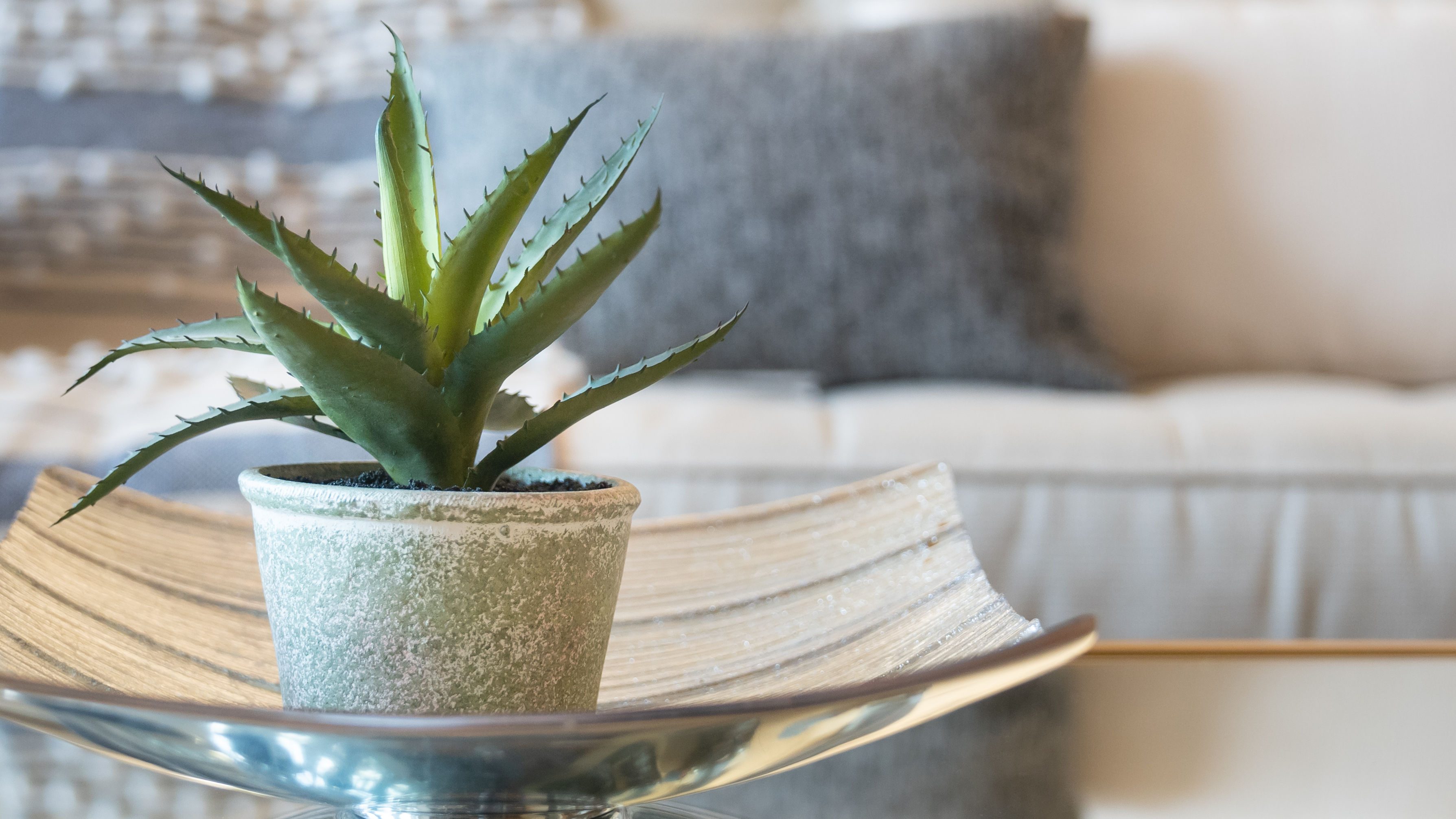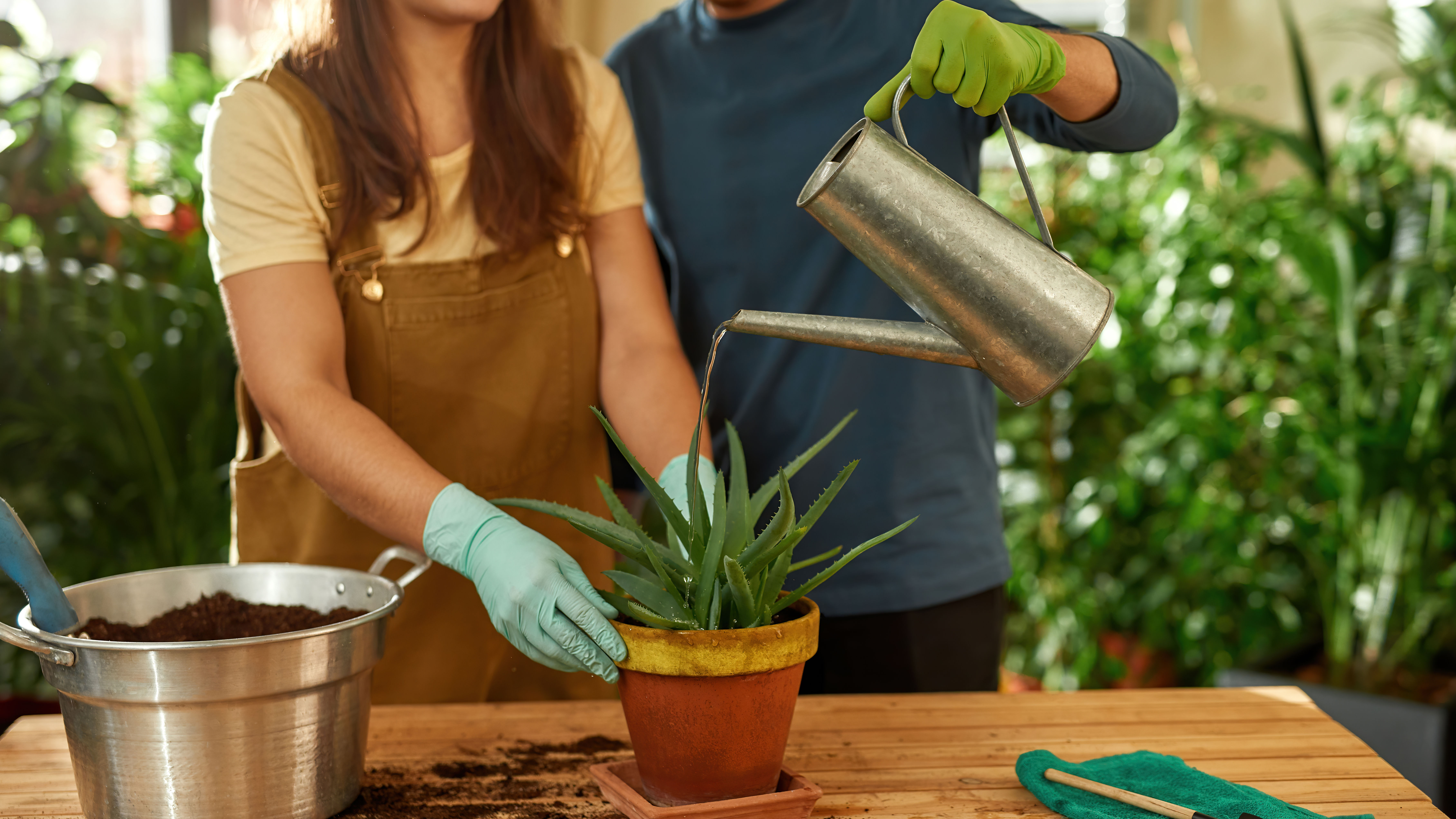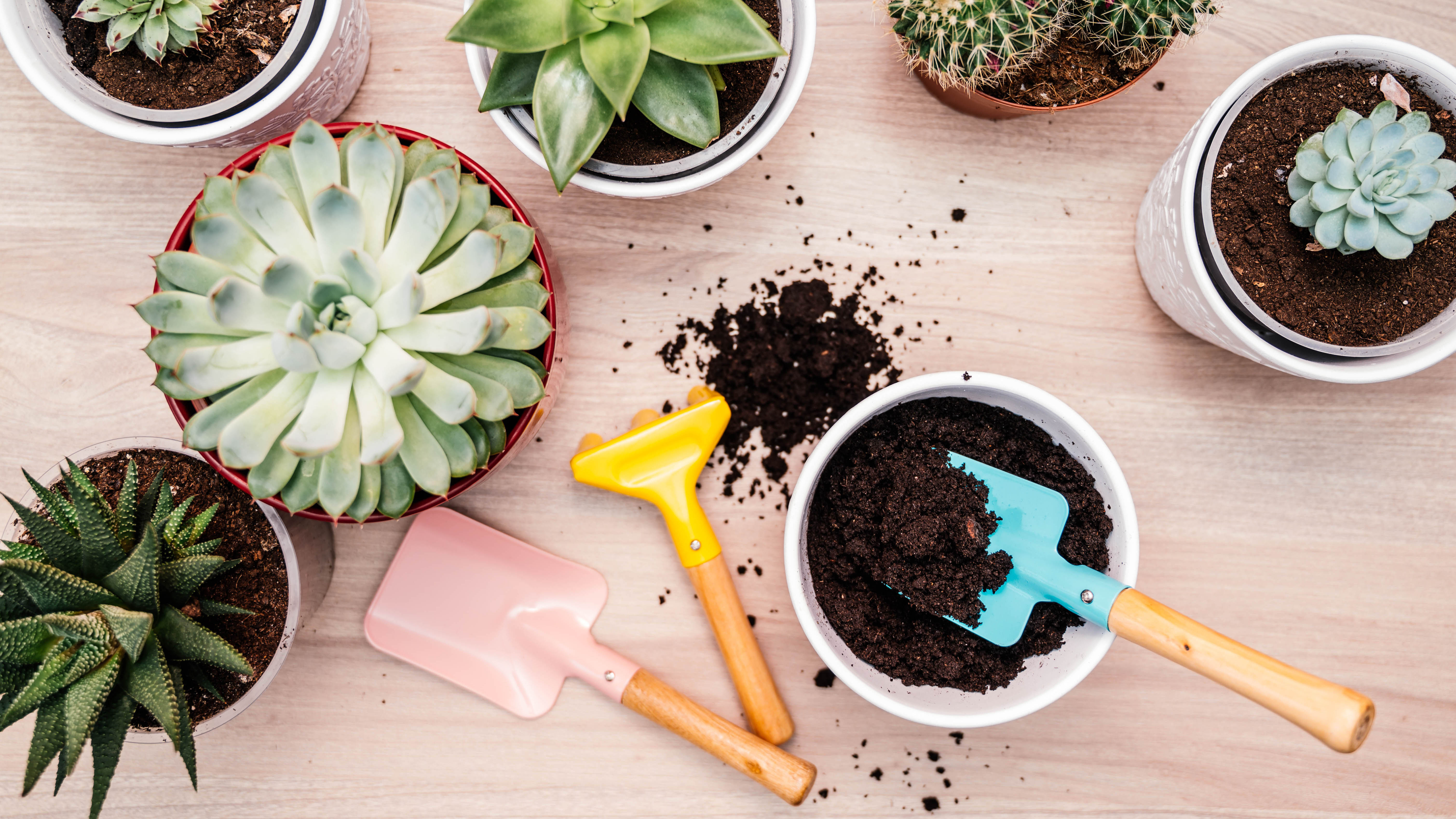
Aloe plants, with their distinctive succulent leaves, are popular additions to many homes. But their benefits are far from merely ornamental. Known scientifically as aloe vera, these evergreen perennials boast a myriad of health benefits beyond acting as a topical gel to treat sunburn. Thanks to its antioxidant properties, aloe plants are said to benefit your digestive health and, according to research, have even been linked to improving blood sugar control in diabetic patients.
Thankfully, they’re also known for their ease of care, making them ideal even for the not-so-green-fingered among us. Thriving in warm conditions and requiring minimal water, Aloe plants are hardy and forgiving, often surviving even with a bit of neglect. However, like any houseplant, they still need specific care to keep them healthy and thriving.
With the help of industry experts, we’ll uncover what those best practices are. So whether you're a seasoned gardener or a first-time plant parent, these seven essential tips — from understanding the plant's love for sunlight to the intricacies of watering and temperature control - will help you provide the best care for your aloe plant.
1. Reduce watering in winter

Although it seems counter-intuitive as the winter air is dryer, most plants actually need less water in the winter months. This is because they naturally slow their growth or even go completely dormant. While surface soil can dry out more quickly in winter, this is not the best indicator that the plant needs water. The same goes for aloe plants.
“During summer aloe vera has low water needs due to its fleshy leaves which store a lot of moisture,” explains Fiona Jenkins, Gardening and Plant Expert at U.K. site MyJobQuote.co.uk.
“In winter, the plant needs even less water and overwatering is one of the most common mistakes that people make with this houseplant.”
Jenkins offers a quick tip to check if the plant needs watering, and all it involves is pushing your finger into the soil - about an inch or two below the surface.
Sign up to get the BEST of Tom's Guide direct to your inbox.
Get instant access to breaking news, the hottest reviews, great deals and helpful tips.
The rules are: If your finger comes out wet and dirty, don’t water. But if the soil underneath is still dry and your finger comes out clean, then it’s time to water.
2. Don't always feed them

Most houseplants won’t need fertilizer in winter, and aloe is the same as their growth naturally slows down or stops completely during this period.
Melissa Denham, interior stylist at Hammonds Furniture, recommends to resume feeding your plants in spring to help them restart their growth.
“If your plants are overfed, the chemicals in the fertiliser are not used and accumulate in the soil where they can damage your whole plant,” she explains.
3. Increase the humidity

One of the biggest challenges an aloe plant needs to overcome in homes during winter is the drop in humidity, as this makes the air dryer.
“[Aloe plants] will benefit from consistent humidity of around 40%,” Jenkins says, while Denham explains how you can increase the humidity in your house, depending on your budget:
“The simplest way is to cluster your plants together or place them on trays filled with pebbles and water.
“You could also place your plants in the bathroom and let them soak in the hot steam from your shower.”
Another option, she adds, is to purchase a humidifier for your home.
4. Keep the temperature just right

Like most houseplants, aloe vera grows well at regular room temperature, but it won’t like temperature extremes or frequent fluctuations. It’s therefore important to make sure you keep them away from open windows and doors to shield them from cold draughts.
“During winter the aloe vera plant requires less attention [than in summer]. However, it is important to keep it in temperatures that don’t fall below 10° Celsius (50° Fahrenheit) ,” says Jenkins.
“Ideal temperatures over the winter will be higher than this and should not fluctuate greatly.”
She adds that a windowsill that maximises the amount of daylight that the aloe vera receives will help it through the challenging dark months, so be sure to place it in an area that receives a lot of light.
If you haven't invested in one of the best smart thermostats for your house yet, that could be one way of making sure you never have to worry about this.
5. The right pot, the right prune

When repotting your plant into a more permanent pot from the plastic grow pot that you usually purchase them in, Shane Dibbs, Director of seed specialist company, Seed Barn, recommends opting for a terra cotta offering, or one made of a porous material, as aloe vera plants are “tender”.
“This allows your soil to stay dry,” he says. “Plastic pots can work, but they will keep the soil moist for a longer period of time. The pot should be about as wide as it is deep and needs to be heavy, to avoid it tipping over.”
Dibbs also sheds light on how best to prune your aloe vera plant, suggesting that it's best not to overdo it.
“Avoid heavily pruning your plant,” he says. “Only prune your aloe vera if the leaves are shrivelled and dead. If the outer leaves of your aloe vera plant are brown, they need to be cut back. Be mindful to never cut an aloe leaf in the centre.”
6. Soil: the Goldilocks rule

Another top tip from Dibbs when it comes to looking after your aloe plant is to ensure your soil isn’t too saturated.
“Aloe plants grow best in well-draining soil,” he explains. “Gardening soil is not the best choice, so opt for a potting mix or make your own with a combination of peat moss, sand and perlite.”
7. Watch out for pests

One of the most annoying aspects of owning house plants is the potential pests they can attract into your home.
Winter pests, such as aphids and spider mites, are especially annoying as they thrive in winter due to the warmer, dry conditions inside people’s homes. And this is not just the case for aloe plants, but it applies to most house plants, so you should be checking all your indoor plants for any potential infestations, regularly.
“Make sure to regularly turn over the leaves of your houseplant and inspect the stems for any pests and wipe them off,” explains Denham. “For larger infestations, you may need to buy some insecticidal soap to get rid of the pests.”
More from Tom's Guide
Lee Bell is a freelance journalist and copywriter specialising in technology, health and fitness and how the latest innovations are shaking up the lifestyle space. From national newspapers to specialist-interest magazines and digital titles, Lee has written for some of the world’s most respected publications during his 12-plus years as a journalist.

